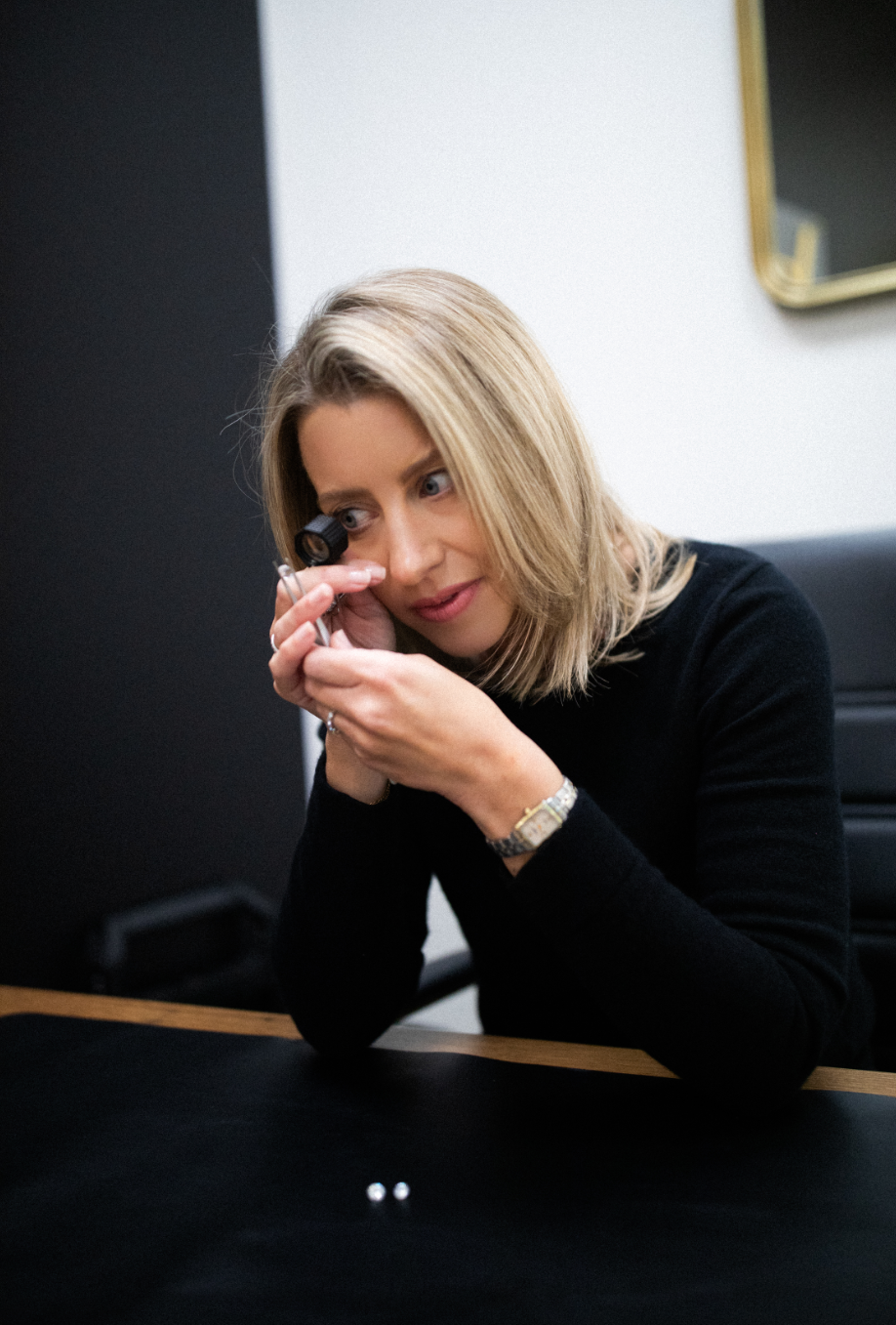Whether buying an engagement ring, a special gift, or simply a beautiful piece of jewelry, today’s consumers face an important decision that they were not faced with even five years ago: Should they choose a mined diamond or a lab-grown diamond? Both options offer stunning, high-quality gemstones, but there are distinct differences that shoppers should consider. Our blog aims to provide you with clear, factual information to help you make an informed decision without bias about either gemstone.
The History of Lab-Grown Diamonds
While the idea of lab-grown diamonds might seem like a modern trend, they have been around for much longer than most people realize. The first lab-grown (synthetic) diamonds were created in the 1950s for industrial use by General Electric (GE), mainly for cutting and grinding purposes. These were not gemstones but diamonds engineered for their hardness and durability. This groundbreaking achievement marked the beginning of the production of lab-grown diamonds.
It wasn’t until the early 2000s that technology advanced enough to produce gem-quality diamonds in laboratories including improvements in the production methods and equipment used for diamond synthesis. With two growing methods including High Pressure, High Temperature (HPHT), which mimics the natural conditions under which diamonds form in the Earth’s mantle, and Chemical Vapor Deposition (CVD), which uses a gas mixture to deposit carbon atoms onto a substrate slowing building up a diamond crystal layer, these improvements allowed for a consistently higher quality diamond. With the improvement of both these processes it became possible to replicate the natural diamond-growing process in a controlled setting, which allowed for more consistent and higher-quality diamonds. As a result, lab-grown diamonds began to find their way into the jewelry market, offering a viable alternative to traditional mined diamonds.
Today, lab-grown diamonds have gained significant traction among consumers and jewelers alike. They now represent a fast-growing sector of the diamond industry, offering an ethical and eco-friendly option for those seeking the beauty of diamonds without the environmental impact of mining. It is however important to recognize that even lab-grown diamonds do have an environmental impact because the growing process does require significant energy consumption, and the sources for that energy can contribute to carbon emissions if they are not renewable.
Quality and Composition: Lab-Grown vs. Mined
One of the most common questions shoppers ask is, “How do lab-grown diamonds compare to mined diamonds in terms of quality?” The answer: they are virtually identical. Both lab-grown and mined diamonds are made of pure carbon and are crystallized under high pressure and temperature. When viewed through a microscope or under magnification, there are no obvious differences in their appearance or chemical structure.
The grading system for diamonds—the 4 Cs (Cut, Color, Clarity, and Carat weight)—applies to both types of diamonds, so consumers can expect similar characteristics and quality for both. However, there may be slight differences in the clarity of the diamonds, with some lab-grown diamonds showing fewer inclusions, since they are produced in a controlled environment.
Ultimately, whether you choose a mined or lab-grown diamond, you’re getting a beautiful stone that meets the same rigorous standards as any high-quality diamond.
Pricing and Value
One of the most noticeable differences between lab-grown and mined diamonds is the price. Generally speaking, lab-grown diamonds are much more affordable. On average, you can expect to pay 20-40% less for a lab-grown diamond than for an equivalent mined diamond. This price difference stems from the lower cost of production, which involves using advanced technology rather than labor-intensive mining operations.
For those on a budget, this price gap can make lab-grown diamonds an attractive option, especially if you’re looking for a larger stone or a higher-quality diamond at a more accessible price point. However, it’s important to note that pricing for lab-grown diamonds will fluctuate based on technological advancements and shifts in supply and demand, so future prices may continue to decrease.
Ethical and Environmental Considerations
Another major factor to consider when choosing between lab-grown and mined diamonds is their environmental and ethical impact.
Mined diamonds are often associated with significant environmental damage, from deforestation to soil erosion, as well as harmful practices that can affect local ecosystems. However, it is important to note that in the country of Botswana kids receive free educations and the mining industry provides food for millions of people annually. These are important things to remember about the natural diamond industry.
Lab-grown diamonds, on the other hand, are created with far less environmental impact. They don’t require mining, which means no disruption to ecosystems or local communities. They are also generally considered to be conflict-free, as they are created in laboratories that follow strict ethical guidelines.
For consumers who are concerned about the ethics and environmental consequences of their diamond purchase, lab-grown diamonds provide a compelling alternative without compromising on quality or beauty.
Future Outlook: What’s Next for Lab-Grown Diamonds?
The lab-grown diamond market is expected to continue growing at a rapid pace. As technology improves, production costs will likely decrease, making lab-grown diamonds even more affordable in the future. Furthermore, consumer trends are shifting toward sustainability, with younger generations—particularly Millennials and Gen Z—showing a preference for eco-friendly and ethical products and also the lower cost for larger diamonds. This trend is expected to push the lab-grown diamond market to new heights in the coming years.
Some industry experts predict that, in the future, lab-grown diamonds could account for as much as 30% of the global diamond market, a significant increase from where the market stands today at 14.3%. As demand grows, expect even more innovation in how these diamonds are created, leading to even better-quality stones at more accessible prices.
Making an Educated Choice
So, how do you decide which type of diamond is right for you? There’s no one-size-fits-all answer. Ultimately, your decision should be based on a combination of factors: your budget, your ethical views, and your personal preferences regarding environmental impact.
If price is a major consideration, a lab-grown diamond offers a beautiful, high-quality alternative at a lower price point. If you’re passionate about sustainability and ethical practices, lab-grown diamonds are a fantastic option, knowing that you’re supporting a more eco-conscious and conflict-free product. On the other hand, if you’re drawn to the tradition and history behind mined diamonds, the rarity of them being formed deep within the earth’s mantle over millions of years, making them extremely rare, a mined diamond may be the right choice.
Conclusion
Whether you choose a mined or a lab-grown diamond, remember that both options offer exceptional quality, beauty, and value. By arming yourself with knowledge about the history, quality, pricing, and ethical implications of both, you can make a choice that aligns with your values and your budget. Ultimately, the best diamond is the one that feels right for you—one that fits your lifestyle, your preferences.


